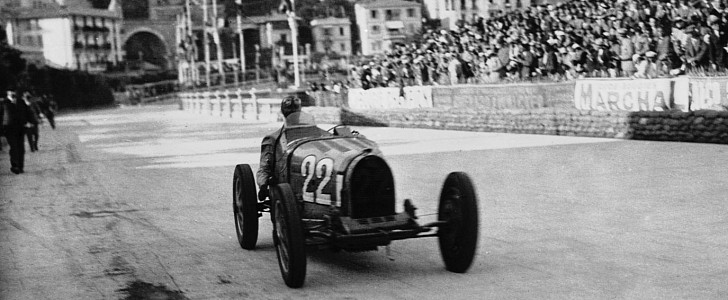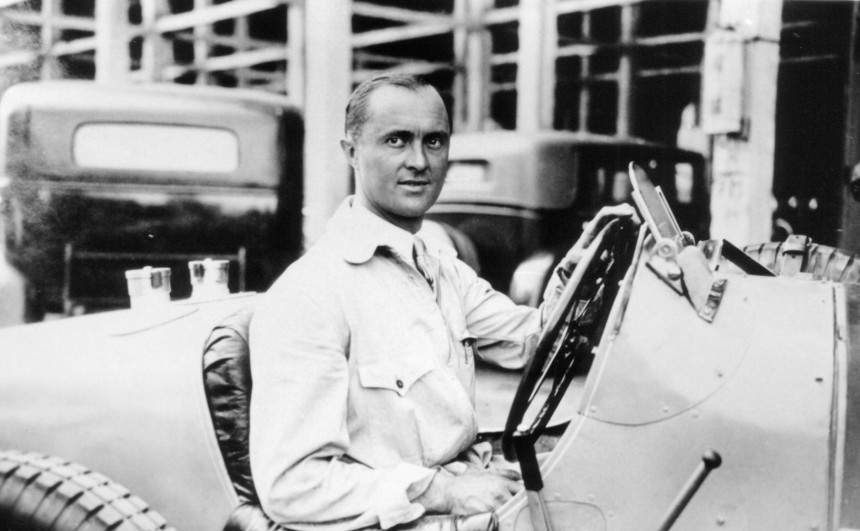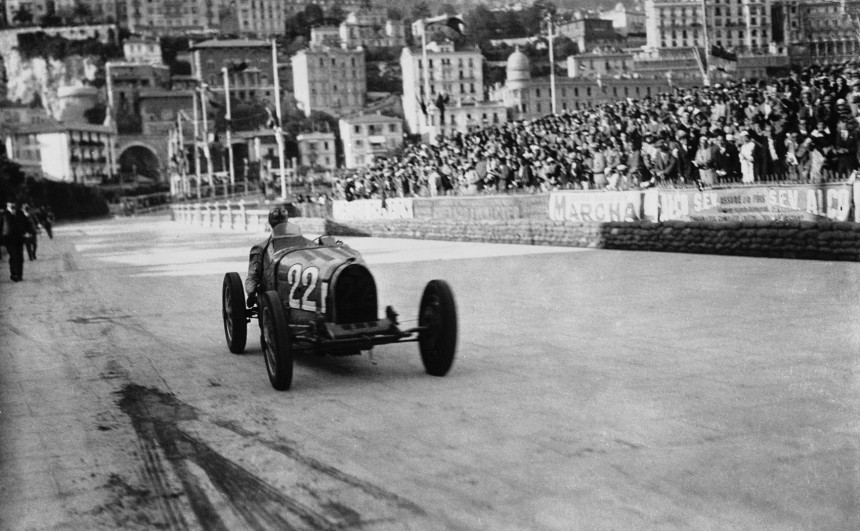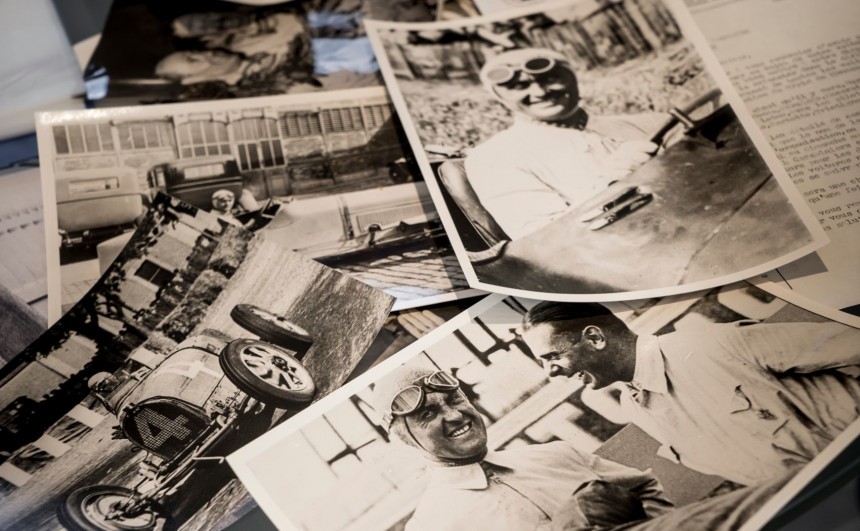The Monaco Grand Prix is one of the toughest races in motorsport, and throughout history, only the most talented drivers managed to cross its finish line first. Among them was Louis Chiron, the first and only Monégasque to triumph at the legendary event exactly ninety years ago.
The first two races held on a narrow course laid out in the streets of Monaco in 1929 and 1930 were won by William Grover-Williams and René Dreyfus, who both drove Bugattis.
On April 19, 1931, at the third edition of the famed Grand Prix, more than half of the cars on the starting grid were also manufactured in Molsheim, an indication of just how good these racing machines were at the time.
Among the drivers battling for supremacy in the 100-lap race were four factory Bugatti Type 51s driven by Guy Bouriat, Achille Varzi, Albert Divo, and local hero Louis Chiron.
Born on August 3, 1899, in Monte Carlo, Alexandre Louis Chiron had a passion for everything that was powered by an internal combustion engine from an early age.
When he was 15 years old, he learned to drive, and by the time the First World War ended, he started entering various Grand Prix as a private Bugatti driver.
In the 1928 Gran Prix season, he became a rising star driving a Type 35 C to victory in the Rome Grand Prix, Marne Grand Prix, San Sebastián Grand Prix, and European Grand Prix held at Monza.
Unfortunately for Chiron, the following two seasons weren’t as successful, as he only managed to win the Belgian Grand Prix in 1930. The biggest disappointment was his failure to win the second edition of the Monaco Grand Prix, finishing second.
Next year, he came back to his hometown determined to win the already-iconic race. Starting in 11th place, the Monégasque remained among the leading drivers in the midfield before steadily fighting his way to the front. By the end of the 20th lap, he and fellow Bugatti works driver Achille Varzi occupied the leading positions, followed closely by three Maserati drivers.
After another 80 grueling laps on the 1.97-mile (3.18-kilometer) makeshift circuit, only nine cars were still racing, and Chiron’s Bugatti crossed the finish line first, much to the delight of his fellow countrymen.
The Type 51 he drove was a further development of the successful Type 35 B powered by a 2.3-liter eight-cylinder with an output of approximately 190 PS (187 hp). The output was made possible in large part because of a new block and cylinder head with twin camshafts driven by spur gears. Additionally, superior airflow as delivered by a Roots-type supercharger. Weighing only 176 lbs (850 kg), this innovative race car was capable of reaching speeds of almost 143 mph (230 kph), and its agility proved unbeatable on such a narrow city circuit.
The triumph at Monaco was the culmination of what had been a unique career for Louis Chiron up to that point. He was 31 years old at the time and continued to race until 1938 when he retired. After the Second World War ended, he resumed his career, participating in various competitions, including Formula One until 1958.
In a storybook ending, the legendary driver won the 1954 Monte Carlo Rally. Then, a few years before turning 55, he raced a Lancia D50 to sixth place at the 1955 Monaco Grand Prix, becoming the oldest driver to finish an F1 race. That was Chiron’s last official race, although he continued as a test driver for Scuderia Centro Sud in 1956 and André Testut’s private team in 1958.
He permanently retired as a driver after 35 years of racing but maintained an executive role with the organizers of the Monaco Grand Prix throughout the years.
Louis Chiron is remembered as one of the best drivers of his era and among the most influential in the early history of Bugatti. The company honored him by naming the 1999 Bugatti 18/3 Chiron concept car and the 2016 Bugatti Chiron hypercar after him.
On April 19, 1931, at the third edition of the famed Grand Prix, more than half of the cars on the starting grid were also manufactured in Molsheim, an indication of just how good these racing machines were at the time.
Among the drivers battling for supremacy in the 100-lap race were four factory Bugatti Type 51s driven by Guy Bouriat, Achille Varzi, Albert Divo, and local hero Louis Chiron.
When he was 15 years old, he learned to drive, and by the time the First World War ended, he started entering various Grand Prix as a private Bugatti driver.
In the 1928 Gran Prix season, he became a rising star driving a Type 35 C to victory in the Rome Grand Prix, Marne Grand Prix, San Sebastián Grand Prix, and European Grand Prix held at Monza.
Unfortunately for Chiron, the following two seasons weren’t as successful, as he only managed to win the Belgian Grand Prix in 1930. The biggest disappointment was his failure to win the second edition of the Monaco Grand Prix, finishing second.
After another 80 grueling laps on the 1.97-mile (3.18-kilometer) makeshift circuit, only nine cars were still racing, and Chiron’s Bugatti crossed the finish line first, much to the delight of his fellow countrymen.
The Type 51 he drove was a further development of the successful Type 35 B powered by a 2.3-liter eight-cylinder with an output of approximately 190 PS (187 hp). The output was made possible in large part because of a new block and cylinder head with twin camshafts driven by spur gears. Additionally, superior airflow as delivered by a Roots-type supercharger. Weighing only 176 lbs (850 kg), this innovative race car was capable of reaching speeds of almost 143 mph (230 kph), and its agility proved unbeatable on such a narrow city circuit.
The triumph at Monaco was the culmination of what had been a unique career for Louis Chiron up to that point. He was 31 years old at the time and continued to race until 1938 when he retired. After the Second World War ended, he resumed his career, participating in various competitions, including Formula One until 1958.
He permanently retired as a driver after 35 years of racing but maintained an executive role with the organizers of the Monaco Grand Prix throughout the years.
Louis Chiron is remembered as one of the best drivers of his era and among the most influential in the early history of Bugatti. The company honored him by naming the 1999 Bugatti 18/3 Chiron concept car and the 2016 Bugatti Chiron hypercar after him.









